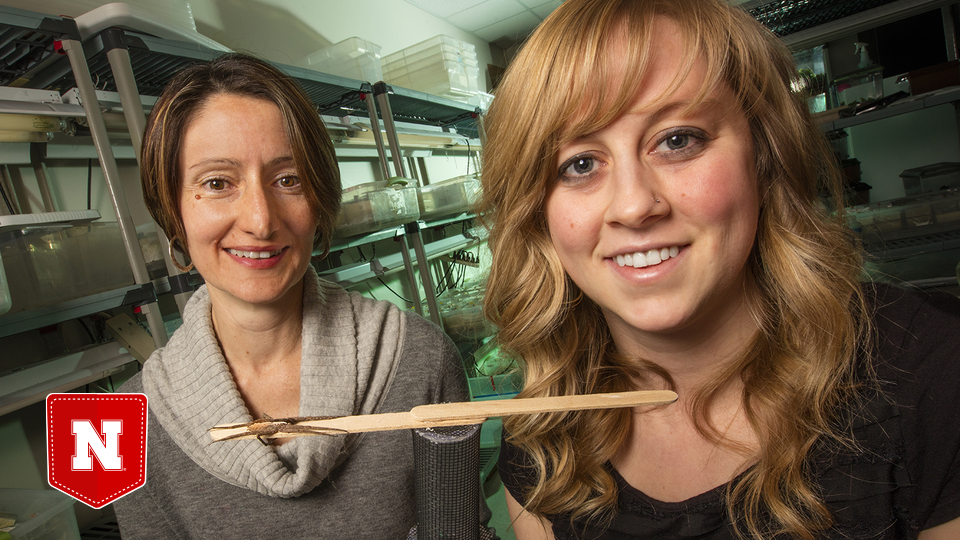· 2 min read
How do sexual restraints help male spiders produce more offspring?

Welcome to Pocket Science: a glimpse at recent research from Husker scientists and engineers. For those who want to quickly learn the “What,” “So what” and “Now what” of Husker research.
What?
Female nursery-web spiders often attempt to cannibalize their male mates after sex. But before doing the deed, a male will typically bind a female’s forelegs with silk. Husker arachnologists Alissa Anderson and Eileen Hebets previously discovered that this practice allows males to survive sexual encounters about seven times more often than they do when not restraining females.
Anderson and Hebets have now conducted another study showing that this silk-wrapping foreplay also allows the males to transfer roughly twice as much sperm during sex.
So what?
Females that received the extra sperm produced about 25 percent more offspring, suggesting that the restraints help males achieve their No. 1 goal: passing along the maximum amount of their genetic material to future generations.
Now what?
The study noted that it’s unclear why twice as much sperm translates to only 25 percent more offspring – a question that future research could address. Also unclear: Given that a female’s size did not affect the number of offspring, why do males apparently deliver more sperm to smaller females?








